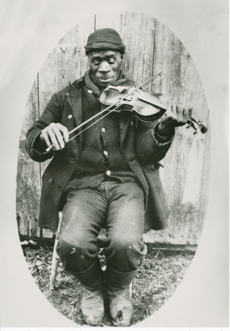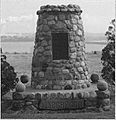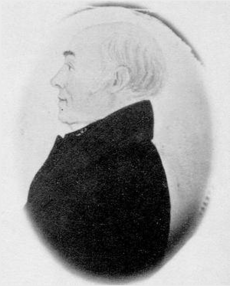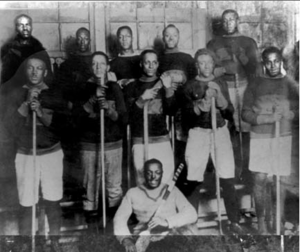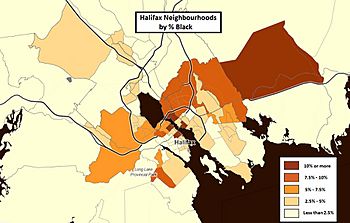Black Nova Scotians facts for kids
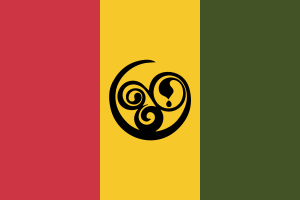
The flag was designed by Wendie Wilson and first shown in February 2021.
|
|
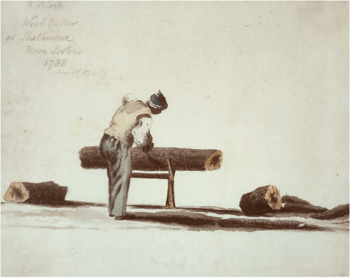
The earliest known picture of a Black Nova Scotian from 1788. He was a wood cutter in Shelburne, Nova Scotia.
|
|
| Total population | |
|---|---|
| 28,220 3% of Nova Scotia's population (2021) |
|
| Regions with significant populations | |
| Languages | |
| African Nova Scotian English, Canadian English, Canadian French | |
| Religion | |
| Christianity (Baptist) and others | |
| Related ethnic groups | |
| African Americans, Black Canadians, Merikins, Sierra Leone Creoles |
Black Nova Scotians (also called African Nova Scotians or Afro-Nova Scotians) are Black Canadians. Their ancestors mainly came from the Colonial United States. They arrived in Nova Scotia, Canada, in the 1700s and early 1800s. Some were slaves who found freedom, and others were already free.
In 2021, about 28,220 Black people lived in Nova Scotia. Most of them live in Halifax. Since the 1950s, many Black Nova Scotians have moved to Toronto. They went there for more job opportunities. Before 1967, Black Nova Scotians made up 37% of all Black Canadians.
The first Black person recorded in Nova Scotia was Mathieu da Costa. He was a translator for the French in 1604. West Africans were brought as enslaved people in the 1600s and 1700s. Many came from the French West Indies to Nova Scotia.
A large group of Black people came after the American Revolutionary War. The British promised freedom to thousands of slaves who joined them. About 3,000 African Americans settled in Nova Scotia after the war. They were known as Black Loyalists. In 1796, Jamaican Maroons were also brought here. However, many Loyalists and almost all Maroons later moved to Freetown in Sierra Leone. There, they became known as the Sierra Leone Creole people.
During this time, British missionaries started schools for Black Nova Scotians. Slavery in Nova Scotia slowly ended because of court decisions. These decisions were similar to those made in Britain.
Another big group of Black people arrived during the War of 1812. They were African Americans escaping slavery in the United States. Many found freedom on British ships. The British offered them freedom and land. New schools like the Royal Acadian School and churches like the African Baptist Church in Halifax helped Black Canadians. Before the American Civil War, many African Americans moved to Canada. Most settled in Ontario. Some Black Nova Scotians also have Indigenous heritage. This is because Black and First Nations communities sometimes married.
In the 1900s, Black Nova Scotians worked for civil rights. They formed groups like the Nova Scotia Association for the Advancement of Coloured People. Other groups included the Nova Scotia Human Rights Commission and the Black United Front. The Black Cultural Centre for Nova Scotia was also created. In the 2000s, the government and community groups have apologized for past wrongs. These include the Africville Apology and the Viola Desmond Pardon. They also apologized to the No. 2 Construction Battalion.
Contents
A Look Back in Time
Black Nova Scotians have a rich history. Here's how their numbers changed over time:
| Year | Total Black Canadians | Black Nova Scotians | Percent in Nova Scotia |
|---|---|---|---|
| 1881 | 21,394 | 7,062 | 33% |
| 1951 | 18,020 | 8,141 | 45% |
| 2016 | 1,198,545 | 21,910 | 2% |
The Early Years: 1600s
Port Royal's First Black Resident
The first Black person recorded in Canada was Mathieu da Costa. He came to Nova Scotia between 1605 and 1608. He worked as a translator for French explorer Pierre Dugua, Sieur de Monts. The first known Black person to live in Canada was Olivier Le Jeune. He was an enslaved person from Madagascar.
The 1700s: New Arrivals and Freedom Struggles
Louisbourg's Enslaved People
Between 1713 and 1760, about 10,000 French people lived in Louisbourg. Among them were 216 enslaved people of African descent. They worked in many jobs, like servants, bakers, and soldiers. Most of these enslaved people came from the French West Indies.
Halifax: A Growing City
When Halifax, Nova Scotia was founded in 1749, some British people brought enslaved people with them. By 1767, 54 Black people lived in Halifax. The first Black community in Halifax was on Albemarle Street. This street later had the first school for Black students in Nova Scotia, opened in 1786. This school was the only charity school in Halifax for 26 years. White students were not allowed to attend.
Before 1799, 29 Black people were buried in the Old Burying Ground (Halifax, Nova Scotia). Seven of these were from the New England Planter migration (1763-1775). Twenty-two were from after the Black Loyalists arrived in 1776.
In 1783, 73 Black people arrived in Halifax from New York. Of the 4,007 Black people who came to Nova Scotia in 1783, 69% were free. 35% were former British soldiers, and 31% were slaves of white Loyalists. About 550 Jamaican Maroons lived in Halifax for four years (1796-1800). They later moved to Freetown in Sierra Leone. In 1816, 155 Black people who came during the War of 1812 lived in Halifax.
The American Revolution and Black Loyalists
The British promised freedom to enslaved people who joined their side during the American Revolution. About 3,000 Black Loyalists were brought to Nova Scotia by ship between April and November 1783. They were mostly skilled workers and laborers. Many came from Virginia, South Carolina, Georgia, and Maryland. Their names were often recorded in the Book of Negroes.
In 1785, schools for Black Nova Scotians began to open. The first teacher in Halifax was a "capable and serious Negroe woman." The school first had 36 Black children. It later moved and was supported by different teachers. The school closed in 1814 when the Royal Acadian School opened for both Black and white students.
-
Rose Fortune, a Black Loyalist in Annapolis Royal around 1830.
-
Lawrence Hartshorne, a Quaker who helped Black Nova Scotians move to Sierra Leone in 1792.
Black Soldiers and Pioneers
Many Black Loyalists served in the British Army. Some were part of the Black Pioneers, the only Black regiment of the war. These soldiers settled in Digby and received less land than white Loyalist soldiers. They settled under the leadership of Stephen Blucke. He is seen as a key founder of the Afro-Nova Scotian community.
Birchtown: A Free Black Settlement
Blucke helped found Birchtown, Nova Scotia in 1783. It was the largest settlement of Black Loyalists. It was also the largest free Black settlement in North America in the 1700s. The town was named after British General Samuel Birch. He helped Black Loyalists leave New York. Other Black Loyalist communities were Brindley town (now Jordantown) and Tracadie.
Birchtown was near Shelburne, a town with mostly white residents. In 1784, tensions led to the Shelburne riots. White Loyalists forced Black residents out of Shelburne and into Birchtown. After the riot, many families left Birchtown. At least half moved to Sierra Leone in 1792. The British government spent a lot of money to help them move. They were led by John Clarkson (abolitionist) and became known as the Nova Scotian Settlers.
Tracadie: Another Important Settlement
Another important Black Loyalist settlement was Tracadie. Black Nova Scotians, led by Thomas Brownspriggs, moved there in 1787. None of the Black people in eastern Nova Scotia moved to Sierra Leone.
One Black Loyalist was Andrew Izard (born around 1755). He had been enslaved in South Carolina. He escaped in 1778 and worked for the British army. He arrived in Nova Scotia in 1783 and settled in Guysborough. His family still lives there today.
Education in Tracadie was supported by Charles Inglis. Teachers included Thomas Brownspriggs and Dempsey Jordan. By 1827, there were over 30 Black families in Tracadie.
Ending Slavery in Nova Scotia (1787–1812)
While many Black people who came to Nova Scotia were free, some were still enslaved. These enslaved people were owned by white Loyalists. In 1772, Britain made the slave trade illegal in the British Isles. This influenced Nova Scotia. In 1788, James Drummond MacGregor from Pictou wrote the first anti-slavery paper in Canada. He also started buying freedom for enslaved people.
The Nova Scotian government refused to make slavery legal in 1787, 1789, and 1808. Two chief justices, Thomas Andrew Lumisden Strange and Sampson Salter Blowers, worked hard to free enslaved people. Justice Alexander Croke also seized American slave ships. The last slave sale in Nova Scotia happened in 1804. By the end of the War of 1812, few people were left enslaved in Nova Scotia. The British Empire outlawed the slave trade in 1807 and slavery completely in 1833.
-
Richard John Uniacke, an abolitionist who helped free Black Nova Scotian slaves.
-
The James Drummond MacGregor Monument in Pictou, Nova Scotia.
Jamaican Maroons in Nova Scotia
On June 26, 1796, about 543 Jamaican Maroons were sent from Jamaica to Nova Scotia. They had been defeated in an uprising against the British. The ships arrived in Nova Scotia in July. Halifax was busy with construction to improve its defenses. The Maroons were put to work on projects like the Citadel.
The Maroons found Nova Scotia's winters very cold. They also disliked being separated and the unfamiliar farming. Their leader, Montague James, asked the British government to let them go to Sierra Leone. They were allowed to leave. On August 6, 1800, the Maroons left Halifax and arrived in Freetown, Sierra Leone, in October. They started a new community there called Maroon Town, Sierra Leone.
The 1800s: New Communities and Civil War
In 1808, a Black regiment was formed in the colony.
Black Refugees from the War of 1812
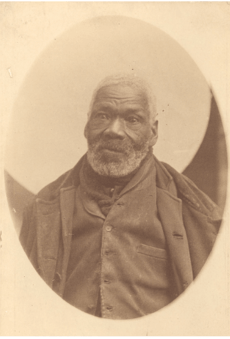
Another large group of Black people came to Nova Scotia between 1813 and 1815. These were Black Refugees escaping slavery in the United States. They settled in places like Hammonds Plains, Beechville, Lucasville, and Africville.
Canada was not suitable for large farms that used enslaved labor. Slavery became rare in Canada. By 1800, it was almost gone in British North America. It was fully illegal in the British Empire after 1834. This made Canada a safe place for those fleeing slavery.
Education for All: Royal Acadian School
In 1814, Walter Bromley opened the Royal Acadian School. Many Black students attended, both children and adults. They learned on weekends because they worked during the week. Some Black students started businesses in Halifax.
In 1836, the African School opened in Halifax. Similar schools soon followed in Preston, Hammond's Plains, and Beech Hill.
New Horizons Baptist Church: A Center for Change
Baptist minister John Burton was one of the first to have Black and white Nova Scotians in the same church. In 1811, most of his church members were free Black people from Halifax and nearby settlements. Black people were welcomed in the Baptist Church when other churches often ignored them. Burton became known for his work with Black communities. He was a mentor to Richard Preston.
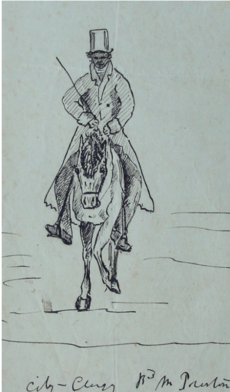
New Horizons Baptist Church (also known as the African Baptist Church) was started by Black Refugees in Halifax in 1832. Black citizens were proud of this church. It showed that former enslaved people could build their own institutions. Under Richard Preston's leadership, the church became a base for social action.
Preston and others created a network of Black Baptist churches across Nova Scotia. The Halifax church was called the "Mother Church." Five of these churches were in Halifax: Preston (1842), Beechville (1844), Hammonds Plains (1845), Africville (1849), and Dartmouth. From meetings at the church, they also formed the African Friendly Society and the African Abolition Society.
The church continued to be a center for social change in the 1900s. Important reverends included William A. White and William Pearly Oliver.
Black Nova Scotians in the American Civil War
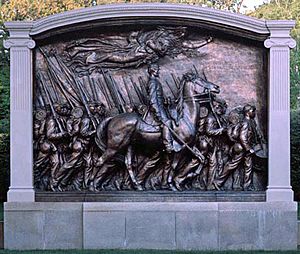
Many Black Nova Scotians fought in the American Civil War to end slavery. Joseph B. Noil and Benjamin Jackson are two well-known Nova Scotians who fought. Three Black Nova Scotians served in the famous 54th Regiment Massachusetts Volunteer Infantry: Hammel Gilyer, Samuel Hazzard, and Thomas Page.
The 1900s: Civil Rights and Community Building
The Coloured Hockey League
In 1894, an all-Black ice hockey league was started in Nova Scotia. It was called the Coloured Hockey League. Black players from Nova Scotia, New Brunswick, and Prince Edward Island played in it. This league started 23 years before the National Hockey League. It is believed to have introduced some hockey moves, like the slapshot. The league operated until 1930.
World War One: The No. 2 Construction Battalion
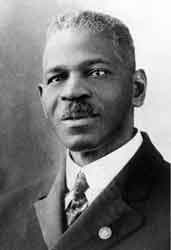
The No. 2 Construction Battalion was the only mostly Black battalion in Canadian military history. It was also the only Canadian battalion of Black soldiers to serve in World War I. It was formed in Nova Scotia, and 56% of its members (500 soldiers) were from the province. Reverend William A. White became the first Black officer in the British Empire.
Nova Scotia Association for the Advancement of Coloured People
In 1945, minister William Pearly Oliver helped form the Nova Scotia Association for the Advancement of Coloured People (NSAACP). It started from the Cornwallis Street Baptist Church. The group wanted to improve life for Black Nova Scotians. They also worked to improve relations between Black and white people. About 500 Black Nova Scotians joined. By 1956, the NSAACP had branches in many communities. In 1947, the Association successfully took Viola Desmond's case to court. They also pushed for Black women to become nurses at the Children's Hospital in Halifax. They worked to remove racist ideas from school lessons.
Nova Scotia Human Rights Commission
In 1967, the Nova Scotia Human Rights Commission was created. William Pearly Oliver and other Black activists, along with Premier Robert Stanfield, were key to its creation. Its main goal was to help Black Nova Scotians. Gordon Earle was its first employee.
Black United Front
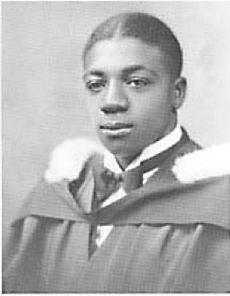
In 1969, Reverend William Oliver started the Black United Front (BUF). This group focused on Black self-reliance. The Black separatist movement in the United States greatly influenced Black communities in Nova Scotia. Marcus Garvey introduced this idea in the 1920s. He believed Black people would not get fair treatment in white society. He suggested they form their own communities or return to Africa.
Garvey visited Nova Scotia twice. His visits helped create a Universal Negro Improvement Association and African Communities League (UNIA) office in Cape Breton. The Black Power Movement of the 1960s also influenced this idea. Stokely Carmichael, who created the phrase Black Power!, visited Nova Scotia in 1968. He helped organize the BUF. The BUF was a Black nationalist group.
Black Cultural Centre for Nova Scotia
Reverend William Oliver later helped create the Black Cultural Centre for Nova Scotia. It opened in 1983. The center has a museum, library, and archives. Oliver wanted the center to show all Nova Scotians how Black culture is part of the province's history. It also highlights the fight for human rights and overcoming racism. For his work, William Oliver received the Order of Canada in 1984.
Moving Out of Nova Scotia
Starting in the 1920s and 1930s, Black Nova Scotians began leaving their communities. They sought work in larger cities like Halifax, Sydney, and Toronto. Some even left Canada for the United States.
Bangor, Maine's lumber industry attracted Black people from Nova Scotia. A Black Nova Scotian community also grew in Sudbury in the late 1940s. This was due to job offers from Vale Inco.
By the 1960s, a Black Nova Scotian neighborhood formed in Toronto. It was around the Kensington Market-Alexandra Park area. First Baptist Church became its spiritual center. In 1972, Alexandra Park had over 2,000 Black Nova Scotians. This was more than any Black settlement in Nova Scotia at the time. Many young Black Nova Scotians faced poverty and unemployment in Toronto.
In 1977, between 1,200 and 2,400 Black Nova Scotians lived in Montreal. Many settled in Little Burgundy.
Famous people like Dwayne Johnson, Arlene Duncan, and Wayne Simmonds have at least one Black Nova Scotian parent who moved outside the province.
The 2000s: Apologies and New Growth
Community Organizations
Black Nova Scotians have created many organizations to help their community. These include the Black Educators Association of Nova Scotia and the African Nova Scotian Music Association. Others are the Health Association of African Canadians and the Black Business Initiative. These groups have worked with officials to get government apologies for past unfair treatment.
The Africville Apology
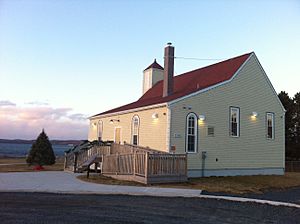
On February 24, 2010, Halifax apologized for the forced removal and destruction of Africville. Africville was a historic Black Nova Scotian community.
Viola Desmond's Pardon
On April 14, 2010, the Lieutenant Governor of Nova Scotia, Mayann Francis, granted Viola Desmond a special pardon. This was the first time such a pardon was given after someone had passed away. It meant that her conviction was a mistake and she was innocent. The government of Nova Scotia also apologized. This happened because Desmond's sister, Wanda Robson, and a professor worked with the government.
In Desmond's honor, the first Nova Scotia Heritage Day was named after her.
Nova Scotia Home for Colored Children Apology
In 2014, the Premier of Nova Scotia, Stephen McNeil, apologized to former residents of the Nova Scotia Home for Colored Children. About 300 people received money for the harm they experienced there.
Recent Immigration
Since the immigration reforms of the 1970s, more people of African descent have moved to Nova Scotia. These newer groups are not considered part of the original Black Nova Scotian community. The last group to be accepted as part of the Black Nova Scotian ethnic group were people from Barbados who came to Cape Breton in the early 1900s.
Here are the top 5 countries of origin for recent immigrants of African descent in Nova Scotia:
| Country of origin | Population 2016 |
|---|---|
| 480 | |
| 350 | |
| 230 | |
| 185 | |
| 185 |
Where Black Nova Scotians Live
Black Nova Scotians first lived in rural areas. These communities often ran themselves until the 1960s. Today, Black Nova Scotians in cities still have ties to these rural roots. Some settlements include Gibson Woods, Greenville, Weymouth Falls, Birchtown, East Preston, Cherrybrook, Lincolnville, Upper Big Tracadie, Five Mile Plains, North Preston, Tracadie, Shelburne, Lucasville, Beechville, and Hammonds Plains. Some also have roots in Black settlements in New Brunswick and Prince Edward Island.
Many towns and cities in Nova Scotia have important Black neighborhoods. These include Halifax, Truro, New Glasgow, Sydney, Digby, Shelburne, and Yarmouth. In Halifax, neighborhoods like Uniacke Square and Mulgrave Park have strong Black populations. The Whitney Pier neighborhood in Sydney also has many Black residents. They were first drawn there by the steel mill in the early 1900s.
Areas with Higher Black Populations
- Halifax (3.8% Black population)
Over 10,000 People
- Dartmouth North (9.7%)
- Whitney Pier (7.7%)
- Clayton Park (7.5%)
- Spryfield (7.2%)
- Cole Harbour (7%)
- Dartmouth (6.5%)
- Rockingham (5%)
- Truro (3.9%)
- West Hants County (2.4%)
Over 5,000 People
- Preston (23%) including Cherry Brook & Lake Loon
- North End Halifax (21%)
- West End Halifax (8.3%)
- Yarmouth (7.8%)
- Lake Echo (6.1%)
- Digby (municipal district) (4.5%)
- Amherst (3.9%)
- New Glasgow (3.9%)
- New Minas (3.8%)
Over 1,000 People
- North Preston (99%)
- East Preston (80%)
- Upper Hammonds Plains (17.9%)
- South End (New Glasgow) (17%)
- Three Mile Plains & Five Mile Plains (15.5%)
- Shelburne (town) (13.8%)
- Acaciaville, Jordantown & Marshalltown (11.1%)
- Weymouth & Weymouth Falls area (9.2%)
- Beechville (9.5%)
- Digby (town) (8.4%)
- Lucasville (7.8%)
- Guysborough (7.6%)
- Lower Truro (6.3%)
- Liverpool (3%)
Famous Black Nova Scotians
See also
 In Spanish: Afroamericanos de Nueva Escocia para niños
In Spanish: Afroamericanos de Nueva Escocia para niños
- Indigenous Black Canadians
- Black Canadians in New Brunswick
- Thomas Peters, a Black Loyalist who settled in Nova Scotia
- The Book of Negroes (2007), a novel based on a real historical document
- Poor Boy's Game
- Speak It! From the Heart of Black Nova Scotia
- Black Cop
Images for kids






